In the dynamic landscape of Human Resources (HR), staying abreast of technological advancements is paramount for organizational success. The journey from legacy to leading-edge HR systems marks a crucial step in streamlining processes, enhancing efficiency, and embracing innovation. In this comprehensive guide, we’ll outline a step-by-step HR system migration roadmap, ensuring a seamless transition and positioning your company at the forefront of HR technology.
1. Understanding the Need for HR System Migration
Begin by addressing the challenges and limitations of your current HR system. Identify pain points, such as outdated interfaces, inefficient workflows, or inadequate data security. Emphasize the importance of adapting to emerging HR technologies to remain competitive in today’s fast-paced business environment.
2. Conducting a Thorough Needs Assessment
Perform a detailed needs assessment to determine the specific requirements of your organization. Consider factors such as scalability, user-friendliness, and integration capabilities. Leverage advanced HR technology solutions to align with the unique needs of your workforce and business objectives.
3. Keyword Research and Selection
Prioritize keywords that resonate with your audience’s search queries. Optimize your content by incorporating relevant keywords naturally. This not only improves SEO but also enhances the readability and relevance of your blog post.
4. Selecting the Right HR System
Evaluate and compare leading-edge HR systems available in the market. Analyze features, user reviews, and case studies to identify a solution that aligns with your organization’s goals. Consider scalability, integration capabilities, and vendor reputation when making a decision.
5. Crafting a Customized Migration Plan
Develop a tailored migration plan that addresses the unique needs and challenges of your organization. Include timelines, milestones, and contingency plans to ensure a smooth transition. Highlight the importance of involving key stakeholders throughout the planning process.
6. Employee Training and Change Management
Effective employee training is critical to the success of any HR system migration. Develop comprehensive training programs to familiarize employees with the new system and mitigate resistance to change. Implement change management strategies to foster a positive transition.
7. Data Migration and Security Measures
Address the intricacies of data migration, emphasizing the importance of preserving data integrity during the transition. Discuss robust security measures to safeguard sensitive employee information, ensuring compliance with data protection regulations.
8. Integration with Existing Systems
Explore strategies for seamless integration with existing systems, such as payroll and timekeeping. Highlight the benefits of a unified HR ecosystem, promoting efficiency and reducing the likelihood of data discrepancies.
9. Continuous Improvement and Future-Proofing
Encourage a mindset of continuous improvement by staying informed about emerging HR technology trends. Discuss the importance of future-proofing your HR system to adapt to evolving business needs and technological advancements.
10. Measuring Success and Gathering Feedback
Establish key performance indicators (KPIs) to measure the success of your HR system migration. Actively seek feedback from users to identify areas for improvement and ensure ongoing optimization of the HR technology ecosystem.
Embarking on the journey from legacy to leading-edge HR systems requires careful planning and execution. By following this step-by-step HR system migration roadmap, your organization can seamlessly transition to advanced HR technologies, unlocking new possibilities for efficiency, productivity, and employee satisfaction. Stay ahead of the curve by embracing innovation and positioning your HR processes at the forefront of industry standards.





